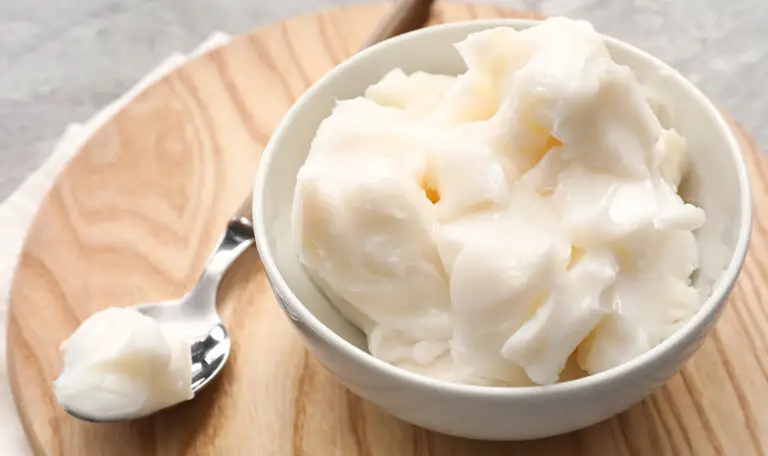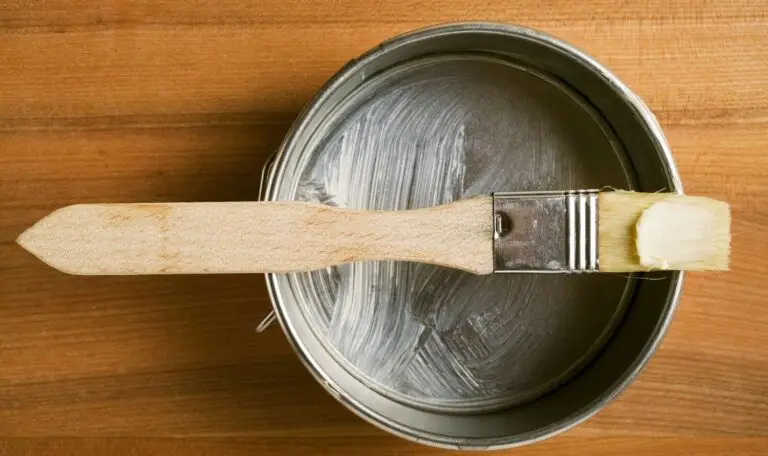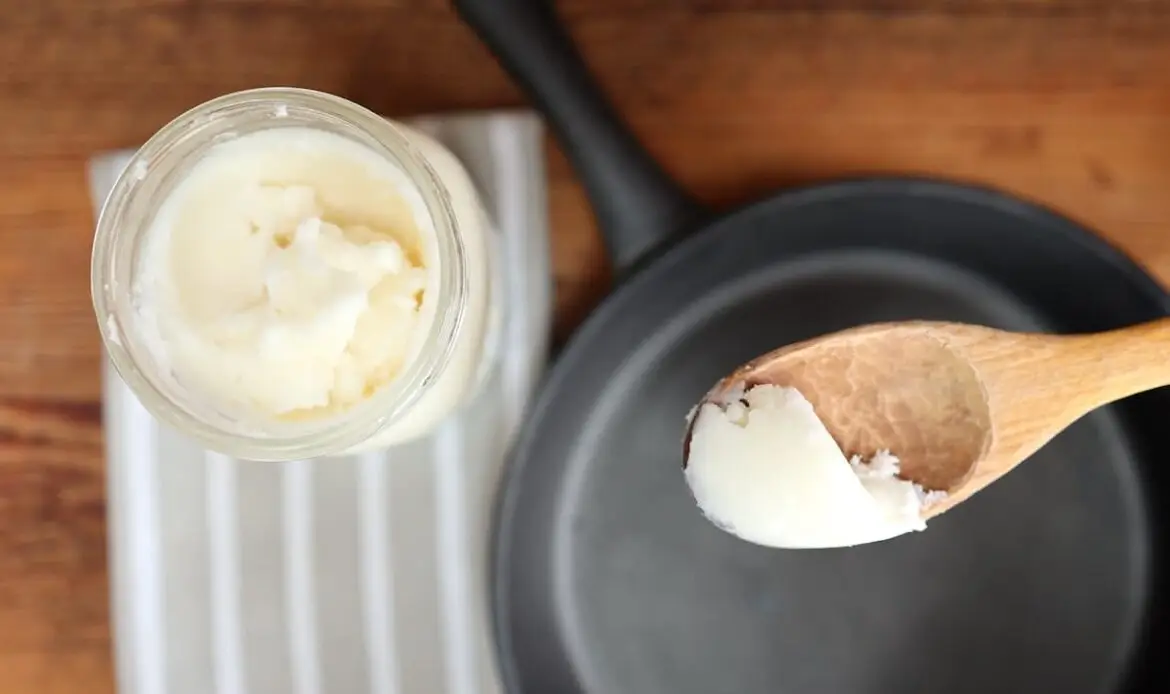When it comes to cooking, the type of fat you use can make a significant difference in the outcome of your dish. Proper greasing of your pot or pan is crucial for ensuring your food doesn’t stick and cooks evenly. One of the best fats for this purpose is lard. In this article, we will explore how to grease a pot and fry food using lard or other fats, providing you with a step-by-step guide and valuable insights into why this traditional method remains a favorite among many cooks.
What is Lard?
Definition: Lard is a type of fat derived from pig fat, particularly the fat surrounding the organs. It’s known for its creamy texture and rich flavor.
Types of Lard: There are various types of lard, including leaf lard, which is considered the highest quality and comes from the fat around the kidneys, and back fat, which is the fat layer along the back of the pig.
Benefits of Using Lard/Fat for Cooking
Cooking with lard and bacon grease offers several advantages, ranging from culinary benefits to nutritional value. Here’s a closer look at why these fats are valued in the kitchen.
High Smoke Point
One of the key benefits of using lard in cooking is its high smoke point, which is around 370°F (188°C). This makes lard an excellent choice for frying and other high-temperature cooking methods. A high smoke point ensures that the fat remains stable and does not break down into harmful compounds when exposed to high heat. This stability allows for even cooking and the development of a desirable crispy texture in fried foods. Whether you’re frying chicken, making pastries, or sautéing vegetables, lard can handle the heat without compromising the quality or safety of your food.
Flavor Enhancement
Lard and bacon grease are renowned for their ability to enhance the flavor of dishes. Lard adds a rich, savory note that can elevate the taste of a variety of foods. Its unique flavor profile is particularly valued in traditional and comfort foods, where it contributes depth and richness. Bacon grease, with its smoky, salty essence, imparts a distinctive taste that can transform simple dishes into something special. Frying eggs, potatoes, or vegetables in bacon grease infuses them with a delightful smoky flavor that is both comforting and delicious. These fats are not just cooking mediums; they are integral flavor components that can significantly enhance the overall taste of your dishes.
Nutritional Benefits
While lard and bacon grease are high in saturated fats, they also contain a significant amount of monounsaturated fats, which are beneficial for heart health when consumed in moderation. Monounsaturated fats can help reduce bad cholesterol levels and lower the risk of heart disease. In addition to these beneficial fats, lard also contains fat-soluble vitamins such as vitamin D, which can be beneficial for bone health and immune function. It’s important to note that moderation is key. Incorporating lard and bacon grease into a balanced diet can provide these nutritional benefits without the negative effects associated with excessive saturated fat intake.
Types of Fats for Cooking/Frying
When it comes to frying, the type of fat you choose can significantly impact the flavor, texture, and overall success of your dish. Here, we explore the different types of fats commonly used for frying and their unique characteristics.

Lard
Lard, derived from pig fat, is a versatile and flavorful option that excels in high-temperature cooking. With a smoke point of around 370°F (188°C), lard is particularly well-suited for frying. Its rich, savory flavor can enhance the taste of various dishes, making it a favorite in traditional and comfort foods. Lard’s stability at high temperatures ensures even cooking and a desirable crispy texture, whether you’re frying chicken, making pastries, or preparing other fried delicacies. Additionally, lard’s distinct taste adds a depth of flavor that is hard to replicate with other fats.
Tallow
Tallow, which is rendered from beef or mutton fat, is another robust fat perfect for frying. Known for its high smoke point, similar to lard, tallow can withstand the rigors of deep frying without breaking down. This makes it an excellent choice for preparing foods that require extended cooking times at high temperatures, such as French fries or fried fish. Tallow imparts a unique, hearty flavor that complements savory dishes and adds a layer of richness. Its ability to remain stable under heat and its distinctive taste make tallow a popular choice in many traditional and contemporary kitchens.
Bacon Grease
Bacon grease, a by-product of cooking bacon, is another flavorful fat that can be used for frying. It has a slightly lower smoke point than lard, typically around 325°F (163°C), making it best suited for moderate-temperature frying and sautéing. Bacon grease adds a delicious smoky, savory flavor to foods, making it an excellent choice for frying eggs, potatoes, and vegetables. Its distinct taste can elevate simple dishes, imparting a rich, smoky undertone that enhances the overall flavor profile. Collecting and using bacon grease is also a great way to reduce waste and make the most of your ingredients.
1. Choosing the Right Fat
Smoke Points
The smoke point of a fat is a critical factor in determining how well it performs at high temperatures. The smoke point is the temperature at which a fat begins to break down and produce smoke. When a fat reaches its smoke point, it not only imparts a burnt flavor to the food but also releases potentially harmful compounds.
Lard, with its relatively high smoke point of around 370°F (188°C), is particularly well-suited for frying. This high smoke point means lard can withstand the high temperatures required for frying without breaking down and smoking. As a result, it allows for even cooking and helps achieve a desirable crispy texture. Using lard for frying also minimizes the risk of burning the fat, ensuring that the food retains its intended flavor and texture.
Flavor Profiles
Different fats not only perform differently at high temperatures but also impart distinct flavors to the food. Lard, for example, is known for its rich, savory taste that can enhance the flavor of many dishes. Its robust profile makes it an excellent choice for recipes that benefit from added depth and richness, such as pastries, fried foods, and traditional dishes like tamales.
On the other hand, vegetable oils, such as canola, sunflower, or grapeseed oil, tend to have more neutral flavors. These oils are ideal for dishes where you want the natural flavors of the ingredients to shine through without being overshadowed by the taste of the cooking fat. Neutral vegetable oils are often preferred for baking, sautéing, and dressings where a subtle or non-existent flavor profile is desired.
When choosing a fat for cooking, it’s important to consider both its smoke point and flavor profile. Lard’s high smoke point and rich flavor make it excellent for frying and adding depth to savory dishes. In contrast, vegetable oils provide versatility with their neutral taste, suitable for a wide range of culinary applications. By understanding the characteristics of different fats, you can select the best option to enhance your cooking and achieve the desired results in your dishes.
2. Preparation Before Greasing
When cooking with fats like lard or bacon grease, having the right equipment is essential for both efficiency and safety. Here are the key items you’ll need:
- Clean Pot or Pan: Start with a clean, dry pot or pan that can withstand high temperatures. Cast iron skillets or heavy-duty stainless steel pans are excellent choices as they distribute heat evenly and retain it well, which is crucial for consistent frying results.
- Brush or Cloth for Applying Fat: To evenly coat your cooking surface with lard or bacon grease, use a brush or cloth. A silicone brush is particularly effective as it can withstand high temperatures and ensures an even application without absorbing too much fat.
- Stove or Heat Source: A reliable stove or heat source is necessary to maintain a steady temperature. Whether you’re using a gas stove, electric burner, or induction cooktop, ensure it allows you to control the heat precisely. Consistent temperature control is vital for achieving the desired cooking results without burning the fat.
Having these items on hand prepares you for effective and safe cooking with lard or bacon grease, ensuring that your dishes turn out perfectly every time.
Safety Precautions
Cooking with hot fats requires careful attention to safety to prevent burns and accidents. Here are some important precautions to keep in mind:
- Handle Hot Fats with Care: Hot lard or bacon grease can cause severe burns if mishandled. Always pour and handle hot fats with caution. When transferring hot fat, use a ladle or heat-resistant measuring cup to avoid spills.
- Use Appropriate Utensils: Opt for utensils that are heat-resistant and designed for high-temperature cooking. Metal tongs, spatulas, and slotted spoons are ideal for frying, as they can withstand the heat and provide precise control. Avoid using plastic utensils, as they can melt and contaminate your food.
- Protective Gear: Consider wearing protective gear such as oven mitts or heat-resistant gloves when handling hot pans and pots. An apron can also protect your clothing from grease splatters. If frying, use a splatter guard to minimize the risk of hot oil splashing onto your skin.
- Maintain a Safe Cooking Environment: Keep your cooking area organized and free of clutter. Ensure that pot handles are turned inward to prevent accidental knocks. Have a fire extinguisher or a container of baking soda nearby to quickly address any grease fires.
- Monitor the Temperature: Use a thermometer to monitor the temperature of the fat. Avoid overheating, as fats can ignite if they reach their smoke point. If you notice the fat smoking excessively, reduce the heat immediately.
How to Render Lard at Home
Step-by-Step Process:
- Cut the fat into small pieces.
- Heat the fat slowly in a heavy-bottomed pot until it melts.
- Strain the melted fat through a fine sieve to remove impurities.
- Let the fat cool and solidify.
Storing Rendered Lard: Store rendered lard in an airtight container in the refrigerator or freezer for long-term use.
3. Greasing a Pot with Lard

Step-by-Step Guide:
- Take a small amount of lard on a cloth or brush.
- Evenly spread the lard over the surface of the pot.
- Heat the pot gently to melt the lard and create a non-stick layer.
- Wipe off any excess lard with a paper towel.
Common Mistakes to Avoid: Avoid using too much lard, which can create a sticky residue. Ensure even coverage to prevent sticking.
4. Frying with Lard/Bacon Grease
When frying with bacon grease or lard, maintaining a steady temperature is crucial for achieving even cooking and preventing burning. These fats have a slightly lower smoke point than some vegetable oils, typically around 370°F (188°C) for lard and a bit lower for bacon grease. To ensure optimal results, it’s important to monitor the temperature closely. Using a thermometer can be especially helpful to maintain a consistent heat level. If the temperature drops too low, the food may absorb too much grease, resulting in a soggy texture. Conversely, if the temperature rises too high, the fats can start to break down, producing a burnt flavor and potentially harmful compounds. Keeping the temperature within a range of 350°F to 370°F (175°C to 188°C) helps to ensure that the food cooks evenly and retains its desired texture and flavor.
Techniques for Perfect Frying with Bacon Grease/Lard
Frying with bacon grease or lard requires specific techniques to achieve the best results. One key step is to ensure that the food you plan to fry is as dry as possible. Moisture on the surface can cause the hot fat to splatter, creating a messy and potentially hazardous situation. Patting the food dry with paper towels before frying helps to minimize splattering and contributes to a crispier finish.
Another important technique is to avoid overcrowding the pan. When too much food is added at once, the temperature of the grease or lard drops, leading to uneven cooking. Overcrowding also restricts proper heat circulation, which is necessary for achieving a uniform, golden-brown crust. Frying in small batches allows each piece of food to have adequate space, ensuring that the temperature of the fat remains stable and each item cooks evenly.
By combining careful temperature control with these frying techniques, you can make the most of bacon grease or lard, producing delicious, perfectly fried dishes with a crispy exterior and a tender interior.
Health Considerations
Saturated Fat Content
Lard, which is derived from pig fat, is known for its high saturated fat content. This type of fat can contribute to various health issues, including heart disease, if consumed in large quantities over time. Therefore, it is crucial to be mindful of your intake of lard and other sources of saturated fats. While lard can add flavor and texture to dishes, it should be used sparingly to maintain a healthy diet. Paying attention to the amount of lard you consume can help you avoid potential negative health impacts associated with high saturated fat consumption.
Moderation and Balanced Diet
Incorporating lard into your diet requires a careful balance with other healthy fats and a diverse range of foods. A well-rounded diet includes a mix of unsaturated fats, such as those found in olive oil, nuts, and avocados, which are beneficial for heart health. By combining lard with these healthier options and ensuring you eat a variety of foods from all the major food groups, you can enjoy the occasional use of lard without compromising your overall nutritional goals. Remember, moderation is key; enjoying lard as part of a balanced diet allows you to benefit from its culinary uses while maintaining a focus on overall health and wellness.
Alternatives to Lard
Environmental Impact
When considering the sustainability of your cooking ingredients, animal fats like lard can be a viable option, particularly when they are sourced from ethical and environmentally conscious farms. These farms prioritize humane treatment of animals, sustainable farming practices, and reduced environmental impact. By choosing lard from such sources, you support agricultural systems that emphasize responsible land use, lower greenhouse gas emissions, and reduced waste. Sustainable farming practices often include rotational grazing, organic feed, and minimal use of antibiotics and hormones, all of which contribute to the overall health of the environment and the animals.
Using animal fats like lard can also reduce food waste, as these fats are often by-products of meat production. By utilizing the entire animal, farmers and consumers can minimize waste and make the most of available resources. This holistic approach to animal farming promotes a more sustainable and efficient food system, benefiting both the environment and the economy.
Comparing with Vegetable Oils
In contrast, many vegetable oils require extensive processing and can have a higher environmental impact. The production of vegetable oils often involves large-scale monoculture farming, which can lead to deforestation, loss of biodiversity, and soil degradation. Crops such as palm oil, soybean, and canola are typically grown in vast plantations that may displace natural habitats and contribute to significant carbon emissions. Additionally, the extraction and refining processes for vegetable oils consume substantial amounts of energy and water, further exacerbating their environmental footprint.
Moreover, the transportation and distribution of vegetable oils can add to their carbon footprint, especially when they are imported from distant regions. In comparison, sourcing animal fats from local, sustainable farms can reduce transportation emissions and support local economies.
While both animal fats and vegetable oils have their place in cooking, considering their environmental impact is crucial. Opting for sustainably sourced animal fats like lard can be a more environmentally friendly choice, supporting ethical farming practices and contributing to a more sustainable food system. By making informed decisions about the fats and oils you use, you can play a part in promoting sustainability and reducing your ecological footprint.
Using lard or other fats for cooking can significantly enhance the flavor and texture of your dishes. With its high smoke point and rich taste, lard is a versatile and valuable addition to your cooking arsenal. Whether you’re greasing a pot or frying up a batch of crispy chicken, incorporating lard can elevate your culinary creations.
FAQs
How long can I store rendered lard?
Rendered lard can be stored in the refrigerator for up to a year and in the freezer for even longer.
Can I reuse lard after frying?
Yes, you can strain and reuse lard a few times, but its quality will degrade with each use.
Is lard healthier than vegetable oil?
Lard contains monounsaturated fats, which can be healthier than some vegetable oils when consumed in moderation.
What dishes are best cooked with lard?
Lard is excellent for frying chicken, making pastries, and cooking dishes that benefit from a rich, savory flavor.
Can I mix lard with other oils for frying?
Yes, mixing lard with other oils can combine the benefits of both fats and create a unique flavor profile.

